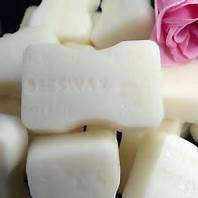Emollients and Moisturizing Creams - Cosmetics Unmasked










Emollients and Moisturizing Creams - Cosmetics Unmasked
These are probably the most basic skin-care products we have, and the benefits of these simple preparations to those who need them should not be underestimated. Emollients are applied to the skin or mucous membranes to prevent evaporation of water. This has the effect of moisturizing the outer layer of the skin cells, making them swell as they absorb water from deeper layers of the skin.
This makes the skin feel softer and smoother, and it makes dry or cracked skin more flexible, alleviating any pain or soreness. The appearance of fine lines may also be temporarily reduced.
The effects last for six to twelve hours before the cells dry out and shrink again. Emollients work by forming a thin layer of oil or grease on your skin, trapping water beneath it and acting as a barrier to water vapor, preventing the loss of water by evaporation.
Any non-irritating oil will have this effect and cosmetic manufacturers have over a thousand ingredients to choose from, ranging from lanolin (the oily secretions of sheep), to vegetable and petroleum -based oils, and even synthetic silicone oils similar to your furniture polish.
The simplest moisturizing substance you can use is petroleum jelly, a purified grease made from crude oil, or a simple vegetable oil such as coconut or olive oil. The problem with these simple emollients, however, is they can block pores and hair follicles, trapping dirt and bacteria that can encourage blackheads and acne.
Emollients do not add moisture to the skin: they simply prevent moisture from being lost. Moisturizing creams include water in the formulation to accelerate the hydration of the dry, outer layer of skin cells.
It's A Fact
If you want to find out how much water your moisturizing cream contains, leave it in the car one frosty night. If it freezes the emulsion will break down and next day it will be a watery mess.
A typical moisturizing cream or lotion will probably be a simple emulsion of an oil and water. This will consist of an oil or grease such as mineral oil (liquid paraffin),vegetable oil, or lanolin, mixed with water and held together with an emulsifier.
The product may also include emulsion stabilizers to improve its shelf life, a surfactant (cleansing substance), an a film former to help it spread evenly and remain in place, with colours and fragrances to improve its overall appearance.
At least two preservatives are likely to be used , one that is soluble in water and one that is soluble in oil.. so that the whole mixture is protected. In an emulsion, the oil is exposed to considerable amounts of oxygen, so an antioxidant may be added to prevent the oil from becoming rancid.
Since there is a danger that bacteria may become trapped under the oily layer formed on your skin by the moisturizing cream, an antimicrobial agent may also be included. As the main ingredients - water and oil - are both transparent, the product is likely to have an insipid or weak appearance.
Opacifiers will remove the watery appearance and a colorant (like titanium dioxide), will give it a rich, creamy texture. Finally, trivial ingredients such as vitamins, proteins, and UV absorbers may be added for marketing reasons.
Moisturizing cream is a water-in-oil emulsion that contains a little water dispersed in oil. It is usually between 70 and 80 percent oil. It is usually applied to the face at night, leaving a continuous oily film which prevents evaporation for several hours, giving the skin plenty of time to hydrate.
Moisturizing cream may also be applied before going out in harsh weather conditions. People with greasy skin may prefer to use a moisturizing milk or lotion. Theses are thinner, oil-in-water emulsions that contain a little oil (20- 30 percent) dispersed in water.
Hand creams are oil-in-water emulsions that contain non greasy waxes dissolved in the oil part of the emulsion. They do not leave an oily feeling on your hands and do not leave greasy fingerprints on everything you touch. Barrier creams leave a heavy layer of grease or wax on your hands. They are designed to prevent loss of your natural skin oils when you use strong detergents or other chemicals.
Reference: Cosmetics Unmasked: Dr stephen & Gina Antczak
Articles-Latest
- Skin tags: Why they develop, and how to remove them
- So That’s Why Your Skin Gets Crepey As You Get Older
- Eye Infection from False Eyelashes
- Teeth stain removal and whitening solutions
- Benefits of collagen for skin
- Why vitamin E should be part of your skincare regime
- Can gray hair be reversed?
- Hair loss affects 1 in 10 women before the menopause – here’s how to treat it
- Conscious ageing and Black skin: What happens when Black does crack?
- Your skin color may affect how well a medication works for you — but the research is way behind
- The C word Cancer
- Astringents
- How does light therapy work? The science behind the popular skincare treatment
- The Most Offensive Fashion Police Criticisms of All Time
- Everything you need to know about lip filler migration, as told by the experts
- Pig semen and menstrual blood – how our ancestors perfected the art of seduction
- Everything you need to know about benzoyl peroxide
- We've bleached, relaxed, and damaged our hair to make ourselves look more white
- Will this be the year that facial filler is cancelled?
- Shock of the old: 10 painful and poisonous beauty treatments
Cosmetic ingredients
LOGIN
Who's On Line
We have 54 guests and no members online
Articles-Most Read
- Home
- White Bees Wax
- Leucidal
- Cosmetic Preservatives A-Z
- Caprylyl Glycol
- Cosmetics Unmasked - How Safe Are Colorants?
- Cosmetics Unmasked - Choosing Ingredients
- Cosmetics Unmasked - Colorants And Fragrances
- EcoSilk
- Toxic Beauty - Who's Looking At Cosmetics?
- Cosmetics Unmasked - Fragrances
- Microbes and Cosmetics
- Chemicals Lingering In The Environment
- Microbes and Safety Standards
- Yellow Bees Wax
- Potassium Sorbate
- Toxic Beauty - Hazardous To Your Health
- Synthetics In Cosmetics - The Industry Fights Back
- Fresh Goat's Milk Soap
- What's Happening in the USA - Cosmetic Regulations - Toxic Beauty
- Active Ingredients
- Cosmetics Unmasked - Listing Cosmetics
- Toxic Beauty - Cocktails and Low Doses
- Natural Waxes A-Z
- Natural Butters A-Z



